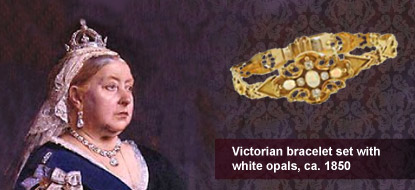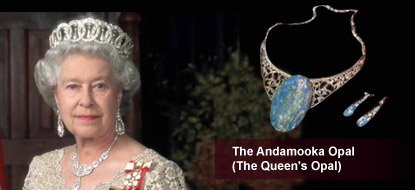The opal history...from the history book
Not always the word 'opal' used to translate ancient works identifies certainty the described gemstone. Probably those works were not talking about the gem we know nowadays, but about common opal, xilopale or chalcedony bianco having particular reflects sometimes the desire to get notoriety has pushed researches to advertise opal findings with the aim of getting all the attention of the press on them but lately denied it. Description of multicolor gemstones are found in medioval texts, but we can't assume with absolute certainty they were talking about opals. in the first works in which it was tried to classify the gemstones, opal is not mentioned either in 'Liber the Lapidus' by the Benedectine Ildegarda di Bingen XII century, or in 'Gemstones book' written by Ahmad Al Tifasi in 1800. From these information comes the deduction that the opal was not known in some period of the history and in some geographical areas.
The writer Edgar Allan Poe mentions it in his work ' The Gold Scarab' (1842-1843) among other gemstones. in 1912 the Trading House Lydia di Mainz (Germany) started to mine, from the Turkish mines, yellow-reddish opal, not much coloured. She started selling these gems for considerable prices.
A royal gemston
During the regno of the Queen Elisabeth (1500), we know from an ancient English description that opal was very appreciated. the king LuigiXVII owned a fabolous opal kept today in the natural history museum of Paris. The queen Victoria (1819-1901) did love opals, that, in that period, were coming from both Slovakia and Australia and she often used to choose them as a marriage present.

The zar Niclola I gave to his daughter, the duchess, the queen of Wurtemberg, a golden buckle with diamonds, emeralds, turquoises, sapphires, garnets and opals. It's told that the empress Giuseppina, Napoleon's wife, owned the most faboulous piece of opal gemstone, called The Trojan Fire (because of its flame-red flashes)
Opals and jewellery
The opal started to get jewellers' attention in the XX century and became required since then, even if, thanks to Queen Eliazabeth, the opal started to be known and admired, since when it was used for a parure she wore during her coronation in 1837 and for a diadem she wore during representative cerimonies.
During the Belle Epoque opal gained a particular significance in the jewellery field. In this period the intelletuals and artists belonging to the decadent period, refusing anything about formality and tradition, in search of new boosts, expecially in the field of goldsmith's art, elected the opal, a gemstone barely used, a gem representative of this particular creative period. A period in which artists were looking for new colours, new pattern and could found all that in just one small gemstone.
the first 15 years of the XX century represent the best period for this gemstone, not just in the very high quality creations such as Tiffany, Vever, Falize, Lalique, Fouquet, Mucha and Cartier but also in quality creations of the small goldsmith's art.

But the fashion has changed after that. People started to appreciate more gemstones with high contrast colours and bigger dimension, both rare characteristics for opals.
Today opal is very appreciated in USA, in Germany, In Switzerland and France, but nowadays the people who love it the best are Japaneses and Chineses.
